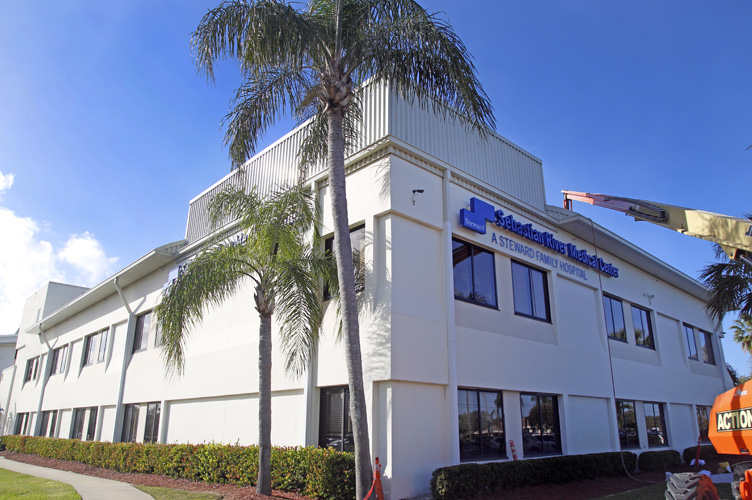
Sebastian River Medical Center’s much-delayed $60-million expansion has missed another projected completion date.
With no explanation from hospital management, the project blew past the December completion date predicted by the hospital’s then-CEO Kyle Sanders before he left last fall.
A new president and CEO, Ronald Bierman, was finally named last week, but the hoped-for February opening now appears further delayed to late spring or early summer.
Bierman formerly led another Steward Health hospital, Trumbull Memorial Hospital in Warren, Ohio, and since November has been running Sharon Regional Medical Center in Pennsylvania.
Construction setbacks are not the only delays causing the hospital to take heat. As the hospital’s construction team prepares for a review next week by the state’s Agency for Health Care Administration, that same agency has fined Sebastian River for delays in filing financial documents unrelated to the expansion.
The $4,000 fine levied by AHCA in mid-December marks the fourth time the hospital has been fined for late filings since Steward Health acquired the hospital in mid-2017. It is the second time the hospital has been late providing prior year financial statements.
Both times, Steward got a one-month extension on top of the AHCA’s 120-day grace period. Last year’s fine amounted to just over $2,000, about half of this year’s fine.
While those filing delays can be measured in months, the hospital’s three-story wing – a project it inherited from SRMC’s previous owner – is now more than a year-and-a-half behind schedule, based on its original projected opening date.
The 90,000-square-foot addition, which will include patient and operating rooms, broke ground in August 2016 when the hospital was owned by Community Health Systems.
At that time, it had a projected completion date of mid-2018, but the project stalled when SRMC was acquired by Steward in 2017. Construction on the building didn’t begin in earnest until almost a year after Steward took over.
While the addition retained its original design, Steward brought in a new contractor, Boston-based Suffolk Construction, which has offices in West Palm and Miami.
As the timeline has stretched, the initial phase of the project itself has scaled back to only half the original number of patient rooms. Sanders called it a “phase-in” last summer after Vero Beach 32963 pointed out a discrepancy between hospital press releases, which spoke of 48 rooms, and the Suffolk website, which at the time mentioned only 25. Sanders did not provide a start date for the second-phase buildout.
As for the first phase, hospital representatives say the building shell will be complete by March or April, according to John McCoy, Indian River County’s chief of community development and current construction. Once site improvements and the exterior of the building are certified, the interior must be completed before a certificate of occupancy can be issued by the county.
Following that, the state’s Agency for Health Care Administration does a final inspection, which will include testing medical gas systems, nurse call and code blue systems, HVAC and fire protection.
As with the county’s inspection process, the AHCA inspections have the potential to further delay the project while any required changes are made.
News of the postponed build-out of upper-floor patient rooms came after the hospital’s admissions in 2018 were the second lowest in a decade, revealed in a required AHCA filing.
Numbers for the first quarter of 2019 also show decreased patient volume, with inpatient discharges at the lowest point since 1994. Ambulatory outpatient visits were the lowest of any year going back to 1997, the earliest results posted. Emergency department visits in the same quarter were the lowest since 2008.
While hospital officials claim the decline in patient volume turned around in the third quarter of 2019, they did not provide data to back up that claim.
AHCA will not post full-year 2019 patient data for SRMC until it has received data from all Florida hospitals, which is due this spring.
The new wing will add more private rooms at the hospital, which currently has 154 licensed beds, including some semi-private rooms.
The wing will also add seven operating suites and a new reception area. On completion, the hospital’s main entrance will be at the back of the complex rather than in front, off U.S. 1, as it is now.
Numbers for the first quarter of 2019 also show decreased patient volume, with inpatient discharges at the lowest point since 1994. Ambulatory outpatient back to 1997, the earliest results posted. Emergency department visits in the same quarter were the lowest since 2008.



